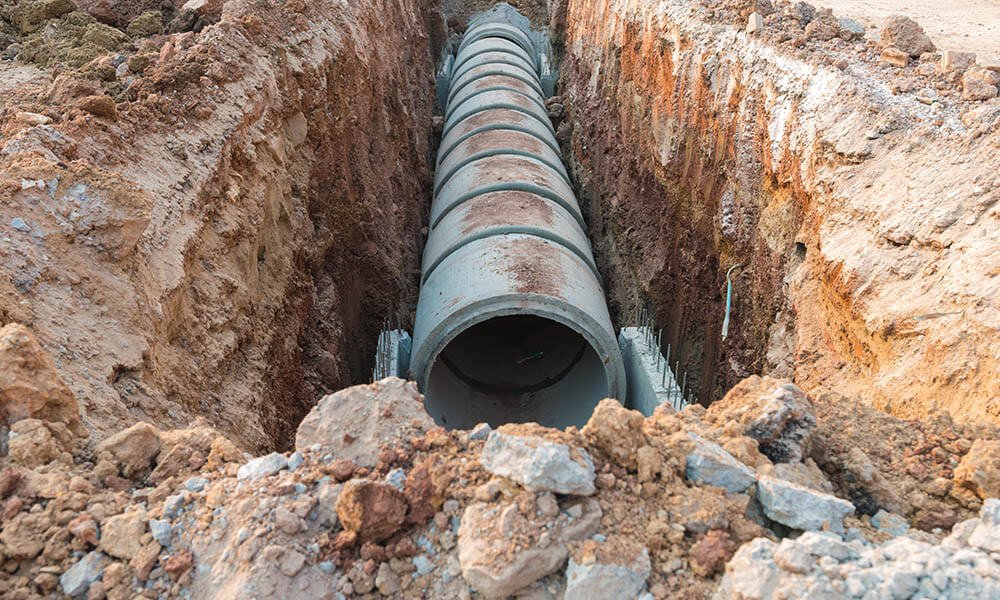Trenchless rehabilitation methods are one of the prominent solutions for underground piping issues for a good reason. First, they don’t require excess manpower and too much digging within your property. And for these reasons, home or business owners in need of pipe rehab services are moving towards these solutions to address their concerns.
Nevertheless, different trenchless methods are developed for different needs. It’s therefore essential to identify your requirements before settling for a specific solution. You also have to weigh out the advantages and disadvantages of each for a better choice.
If you’re wondering which trenchless solution is best for your pipe rehabilitation, wonder no more. Here, we’ll be discussing the top lateral pipe rehab solutions to help you choose better. Continue reading for more information.
Table of Contents
Cured-In-Place-Pipe Liner (CIPP)
A cured-in-place-pipe liner is a trenchless rehabilitation technique that requires the insertion of a liner into an existing pipe. Before the liner is inserted into the host pipe, it’s first soaked with thermosetting resin to strengthen the liner.
During the process, the inverter widens the liner until it completely attaches to the outer walls of the host pipe. Once the resin is ironed down, it becomes a new structural pipe inside the host pipe. If you’re looking for a method that requires no excavation, this technique may be ideal for you.
Advantages of CIPP
- Cost-Effective: Unlike traditional pipe repair methods, CIPP doesn’t require many workers since there’s no digging involved. Also, this method doesn’t require much time to complete.
- Lasts Long: The epoxy used for the lining is strong and durable. It’s generally resistant to corrosion and rot and can last up to 100 years if well taken care of.
- Resistant To Root Intrusion: Because epoxy is strong and thick, roots can’t penetrate it.
- Fixes A Section At A Time: The CIPP enables contractors to fix a broken section without interfering with the rest of the pipe since the procedure involves fixing a section at a time.
- Efficient Flow: CIPP liner is very smooth. It allows an efficient flow of liquids and minor solids. Due to its smooth feature, debris can’t clog the pipe.
Nevertheless, since the CIPP liner follows the host pipe alignment, note that it doesn’t correct deformities, should there be any in the original pipe layout.
Pipe Bursting
Pipe bursting or in-line expansion is a method that refers to the breaking of the existing pipe by using force while installing a new one. A bursting tool is used to break the existing damaged pipe into fragments while pulling the new one behind it.
The application of the pipe bursting method is generally suitable if the existing pipe is damaged beyond repair or has excess deformities. This approach is also suitable when installing a large diameter pipe.
Advantages Of Pipe Bursting
- Less Labor-Intensive: The pipe bursting method is less labor-intensive since there’s no digging required.
- Safe: As already stated, pipe bursting doesn’t require digging. Therefore, the contractors don’t come into contact with harmful underground elements when doing their job.
- Lasts Long: Most contractors generally use seamless, high-quality pipes that aren’t likely to be damaged by roots or any debris. With pipe bursting, you can be assured that your pipes will last long.
- Increases The Flow Capacity: Pipe bursting is also a better way of increasing the flow capacity since the existing pipe can be replaced with the same or a larger pipe suitable for a perfect flow.
However, while pipe bursting is considered among the fastest trenchless rehab methods, the process can interfere with the surrounding ground or soil. And since the existing pipe doesn’t function during the procedure, there must be an alternative infrastructure before the procedure is completed.

Sliplining
This is one of the oldest approaches to trenchless pipe rehabilitation. This requires inserting a new smaller pipe into an existing larger host pipe. The space between the new and the host pipe is grouted for structural integrity and to prevent leaks.
Sliplining procedure is also quicker compared to other trenchless pipe rehabilitation methods. Nevertheless, in most projects, utility holes don’t offer adequate access. Therefore, insertion pits are required for every segment requiring repair. Though the amount of excavation for the pit is less than the one required by traditional dig and replacement methods, sliplining can still disrupt your lawn or property.
Luckily, sliplining is a cost-effective and easy rehabilitation method. It requires easy-to-access tools. Also, segmental sliplining might not require bypassing the current flow.
Conclusion
This article above discusses and explains different trenchless pipe rehabilitation techniques. For every technique, we’ve outlined advantages and possible setbacks. We hope that the information provided can help you decide which trenchless solution is best for a pipe rehab and which technique suits your requirements.










